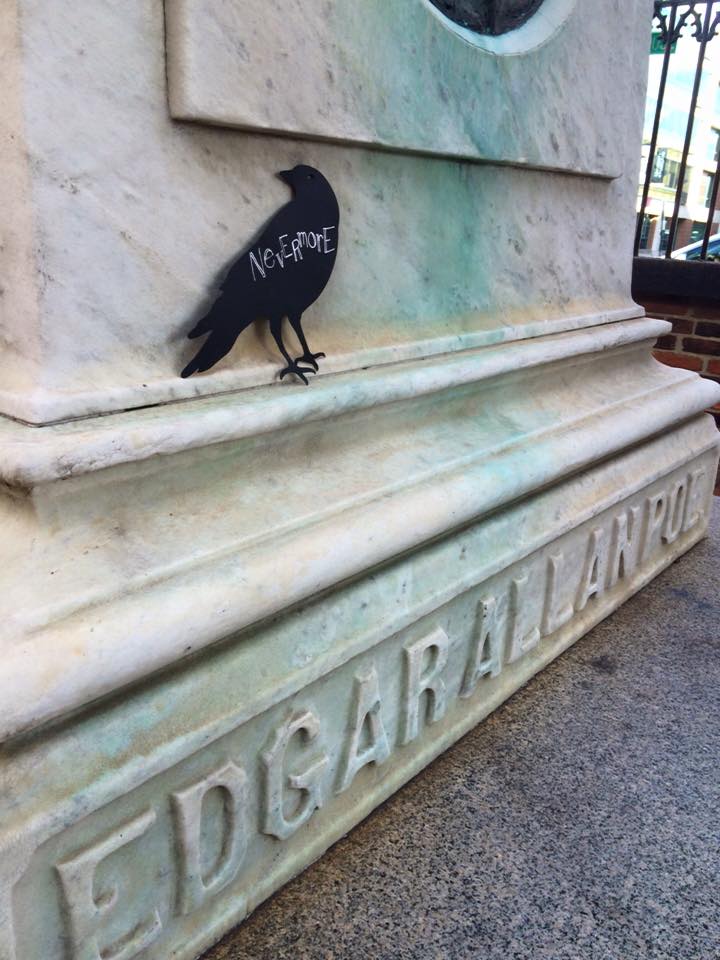October 9, 1849: Baltimore. Edgar Allan Poe is buried.
While the writer’s death was noted in several regional newspapers, his funeral was barely attended. His cousin-in-law Reverend Clemm presided over the rainy ceremony, cut short by the weather and lack of mourners.
Essentially penniless, Edgar was buried in an unmarked grave near his grandfather, David Poe, Sr. in the Westminster Hall and Burying Ground in Baltimore. He was placed in a simple coffin under that marker on October 9, 1849.

In 1875, there was renewed public interest in Poe’s gravesite. The Southern poet Paul Hamilton Hayne wrote about the unkempt gravesite and began a push to re-inter Poe with a more fitting monument.
Money was raised through local efforts, including that of a local teacher. There are reports that she had her students recite Poe’s works in public in return for donations to the fund. The money was raised and a large stone with bronze medallion was commissioned.
Next, the committee had to exhume Poe’s remains in order to place them under the new stone (The graveyard staff didn’t realize that many of the stones had been turned to face the gate but the map did not reflect that. Apparently, they first dug up the wrong person). An article in a Baltimore paper at the time writes:
. . . The laborers employed to perform the task, upon digging to a depth of about five feet, discovered the coffin in a state of good preservation, after having lain in its place nearly 26 years. The lid was removed, and the remains curiously examined by the few present. There before their gaze, was extended the skeleton, almost in perfect condition, and lying with the long bony hands reposing one upon the other, as they had been arranged in death. The skull bore marks of greater decay, the teeth from the upper jaw having become dislodged, but those in the lower were all in place, and some little hair was still clinging near the forehead. Beyond what has been described nothing was to be seen. The coffin was inclosed in another, and reinterred.
The rededication on November 17, 1875 was attended by numerous fans, well-wishers and even poet Walt Whitman. A number of famous writers sent letters to be read out at the ceremony.

In a strange twist, William Gill — a Poe biographer who remained influential in securing a new grave for Poe — helped bring Virginia Clemm’s remains to rest with Poe in Baltimore. She had been buried in Fordham and portions of the cemetery were being razed. Gill learned of it and went to the graveyard where he found workers with her remains in a shovel. He gathered the bones into a box, which he took home and stored under his bed until he could have them interred with Poe in Baltimore. He was eventually able to reunite Clemm and Poe when he interred her remains with his in 1885.
[Adapted from a post I wrote in 2015]
